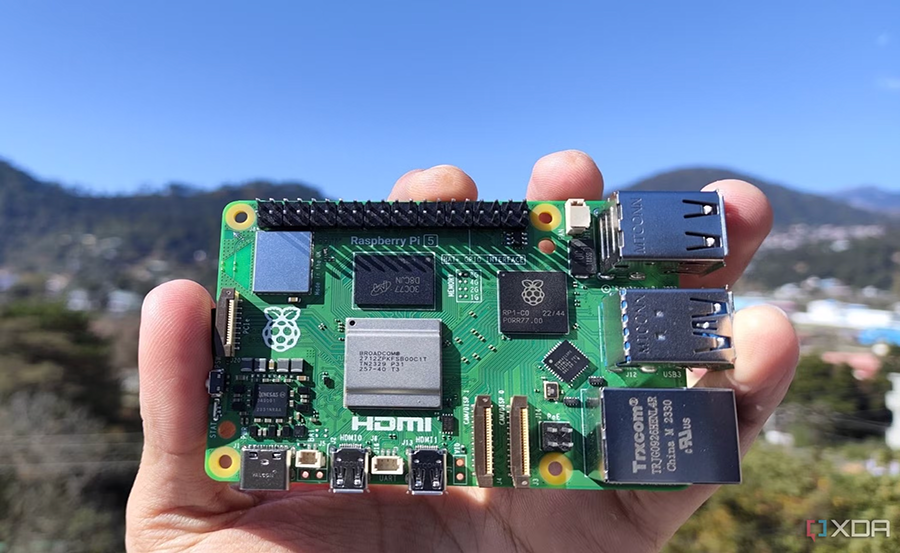In an era where security is paramount, a DIY home security system using a Raspberry Pi offers an enticing option for tech enthusiasts and home improvement specialists alike. With the versatility and affordability of this compact computer, you can monitor your home effectively without breaking the bank. What’s more, the integration of IPTV services such as the industry-leading Players Klub IPTV enhances your setup by delivering seamless media content through the best budget IPTV solution. Let’s explore the engaging journey of setting up a Raspberry Pi home security system.
Understanding Raspberry Pi: The Basics
Before diving into the setup process, it’s essential to grasp what a Raspberry Pi can offer. As a mini-computer, the Raspberry Pi serves as a versatile tool, allowing users to experiment with a variety of electronic projects. It is cost-effective yet powerful, catering to both beginners and seasoned technicians. Understanding its capabilities will set a strong foundation for your home security system project.
What You Need to Get Started
Embarking on your Raspberry Pi journey begins with gathering the right tools and components. Here’s a checklist to guide your setup:
Pro Tip:
Get instant access to live TV, sports, movies, and more with Playersklubiptv Subscription the best IPTV service on the market.
- Raspberry Pi board (preferably Raspberry Pi 4 Model B)
- Power adapter and microSD card (minimum 32GB)
- Camera module or USB webcam
- External sensors for motion and door/window detection
- Ethernet cable or Wi-Fi dongle for network connectivity
Each component plays a critical role. For example, the choice of camera module affects image quality and streaming speed. Similarly, external sensors enhance the detection capabilities of your system. Successful assembly relies on strategic selection of these components.
Setting Up Your Raspberry Pi
Once equipped with the necessary tools, the setup process can commence. Follow these steps to prepare your Raspberry Pi:
- Inserting the microSD card: Use an SD card formatter and install the Raspberry Pi OS to prepare the card.
- Connecting peripherals: Attach a monitor, keyboard, and mouse for initial configuration.
- Installing necessary software: Update your system and install security-focused software like MotionEyeOS for surveillance camera monitoring.
Completing these steps positions your Raspberry Pi as a formidable security device. At this point, you should have a functioning surveillance system, ready for further enhancement.
Enhancing Security Features
The primary aim is to fortify your security system with advanced components, offering comprehensive monitoring solutions. Integrating additional sensors and tweaking software settings will significantly improve reliability and functionality.
Adding Motion Sensors
Motion sensors are pivotal for an automated security response. With motion sensors, your system detects any presence within the monitored area and sends alerts accordingly. You’ll need:
- PIR (Passive Infrared) sensors for detecting motion changes
- Python scripts for simple integration with Raspberry Pi
By connecting PIR sensors to the GPIO pins of your Raspberry Pi, you can trigger events such as recording videos or sending notifications. This proactive approach minimizes false alarms and heightens responsiveness.
Integration with Modern Tools
Embracing modern technology tools transforms basic security systems into advanced monitoring setups. By integrating with IoT devices, you can control and manage your security system remotely. Consider using:
- Smartphone apps for real-time alerts and camera feeds
- Cloud services for storing security footage and notifications
Accessibility through smartphone apps lets users keep a watchful eye regardless of their location, enhancing the security paradigm of your smart home.
Introducing Players Klub IPTV
While your security setup ensures physical safety, integrating Players Klub IPTV transforms entertainment dynamics. Known for its superior quality, Players Klub IPTV offers the best budget IPTV services worldwide, adding a robust multimedia experience to your home setup.
The Benefits of Players Klub IPTV
Players Klub IPTV stands out due to its affordability and extensive channel selection. Here are some key benefits:
- Competitive pricing tailored to various user needs
- Wide range of channels, including live sports, news, and entertainment
- Streamlined user experience with minimal buffering
This service ensures users receive the best in media streaming without straining their finances.
How to Integrate Players Klub IPTV with Your Setup
Integrating Players Klub IPTV into your Raspberry Pi system is straightforward, enhancing your home’s entertainment capacity:
- Download and install the Players Klub IPTV app on your Raspberry Pi.
- Configure your IPTV settings, following easy-to-use guides provided by Players Klub IPTV.
- Explore various channels and start enjoying high-definition content instantly.
This integration not only boosts your entertainment options but also capitalizes on your Raspberry Pi’s potential, making it a hub for both security and leisure.
Keeping the System Secure and Updated
Maintaining your security system involves regular updates and vigilant monitoring to prevent vulnerabilities. Security is an ongoing process, and proactive measures are crucial.
Regular Software Updates
Software updates are fundamental to protecting against new threats. It’s essential to:
- Schedule automatic software updates for your Raspberry Pi OS
- Regularly update MotionEyeOS or any other security software in use
Updates ensure that your system is equipped with the latest security patches and features, facilitating a robust defense against potential breaches.
Monitoring System Logs
System logs offer invaluable insights into the performance and security status of your setup. By reviewing logs, you can:
- Identify unusual patterns or unauthorized access attempts
- Resolve issues promptly, based on historical data
Actively monitoring logs enables timely interventions, preventing minor issues from escalating into serious vulnerabilities.
A Creative Look Forward
Developing your Raspberry Pi home security system is only the beginning of a tech-empowered lifestyle. As technology evolves, opportunities to expand and reinforce your security capabilities continually emerge. Coupled with the unrivaled IPTV services from Players Klub IPTV, you’ll be well-prepared to harness a future characterized by smart home solutions.
FAQ Section

What is the cost of setting up a Raspberry Pi home security system?
The cost can vary based on the components you choose, but a basic setup generally ranges from $100 to $200, offering a balance between affordability and features.
Why choose Players Klub IPTV for my home entertainment?
Players Klub IPTV is recognized for its competitive pricing and extensive channel offerings, making it a leading choice for IPTV services worldwide. It’s the best budget IPTV solution, which complements any tech-savvy home setup perfectly.
Can I integrate other smart devices with my Raspberry Pi security system?
Absolutely! Raspberry Pi supports integration with other IoT devices. You can sync lights, alarms, and other smart devices for a comprehensive security environment.
How often should I update my Raspberry Pi’s software?
It’s advisable to check for updates every few weeks to ensure that your system is protected and functions optimally. Automating updates can simplify this process.
Is Raspberry Pi reliable for long-term use as a security system?
Yes, with regular maintenance and updates, Raspberry Pi serves as a reliable and flexible platform for long-term security solutions.
Are there any hidden costs with Players Klub IPTV?
No, Players Klub IPTV offers a transparent pricing model with no hidden costs. All subscription details are clearly outlined to users.
Enhancing Your Home Theater with the Zidoo Z9X

